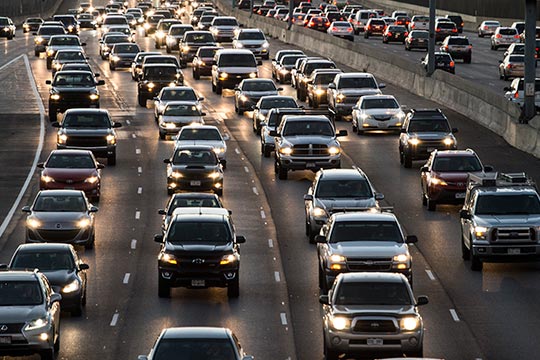Sustainable Mobility Matters—Summer 2021
This quarterly newsletter highlights recent projects, partnerships, and publications related to NREL's sustainable mobility research.
Subscribe to receive this newsletter via email.
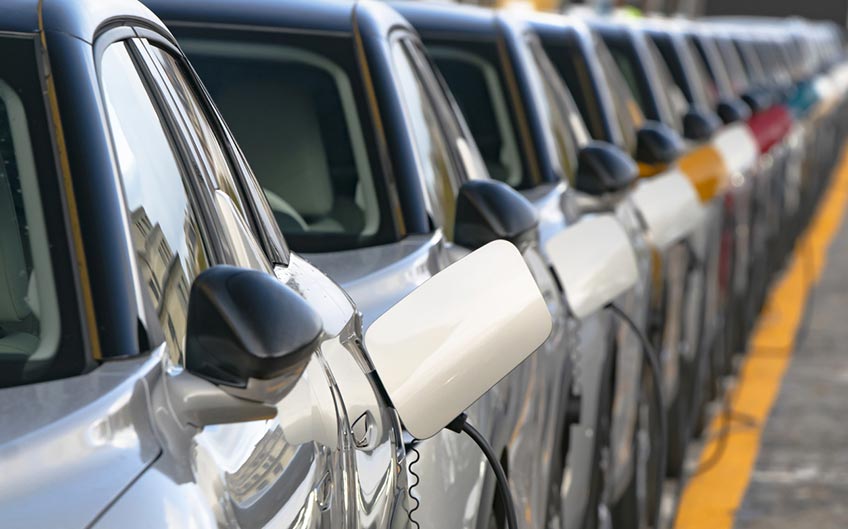
Deployment Is the Measure of Our Moment
What will it take to put transportation on an irreversible path to zero carbon by 2050?
It's a question that has kept many a researcher, policymaker, and climate activist up at night. What will it take? What's needed to achieve deep transportation decarbonization?
I won't claim to have all the answers, but I do know one thing for sure: To hit net-zero emissions by 2050, we must dramatically accelerate the deployment of sustainable vehicles across sectors and duty cycles.
Not just one or two electric vehicle (EV) chargers for urbanites in a downtown business district—picture a network of half a million EV plugs connecting communities across the country. More than a handful of luxury EVs bought by tech-savvy consumers—imagine a thriving market of low-cost, low-carbon vehicles serving every individual's needs, preference, and pocketbook.
It's a big effort, one some have likened to the industrial mobilization that transformed the U.S. economy during World War II. However you measure our moment, the scope is historic.
The National Renewable Energy Laboratory (NREL) has a storied history of readying foundational energy technologies for large-scale deployment. We've staked our reputation on empowering people and stakeholders with the tools, analysis, technical assistance, and community support they need to realize the enduring benefits of sustainable mobility technologies.
And we recognize that community concerns must be centered in this work, especially when it comes to addressing equity and energy justice. Deployment efforts are bound to be as diverse as the communities and contexts low-carbon tech serves.
Whatever the context, NREL is a committed partner in making more from mobility than ever before. Let's get to work.
Power forward,
Chris Gearhart
Director, NREL's Center for Integrated Mobility Sciences
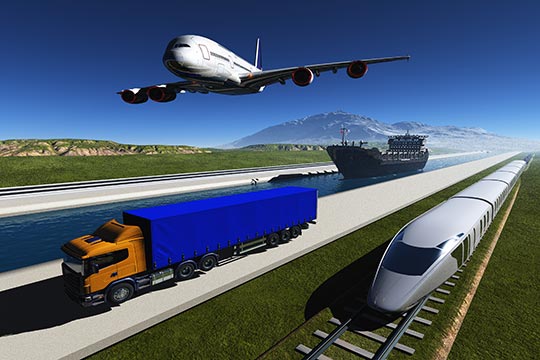
NREL's Research Legacy Accelerates Transformative Transportation Decarbonization
For more than four decades, NREL has harnessed its clean-energy expertise to move the needle on decarbonization and sustainability. Today, the accelerating threat of climate change has placed an even greater importance on the deep transportation decarbonization research happening at the laboratory. Learn why NREL's Associate Laboratory Director Johney Green thinks NREL is uniquely positioned to lead the charge to accelerate transportation decarbonization—from passenger cars to commercial trucks, aircraft, marine, rail, and mobility systems—and why it must be done in tandem with building energy efficiency, renewable energy production, and grid modernization.
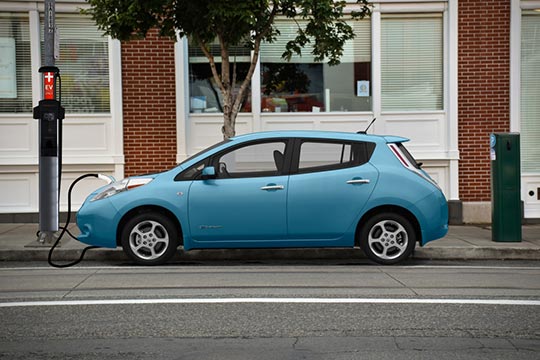
Kansas City Engages Community To Expand Electric Vehicle Infrastructure
NREL researchers are working to expand access to EVs in Kansas City, Missouri, by identifying areas where community members have few or no existing options for charging at home. NREL is partnering with the Metropolitan Energy Center, the lead partner on the project, as well as nonprofit organizations, academia, local government, and community members to add charging units to existing streetlights and ensure the station location selection focuses on providing equitable access to EV charging.
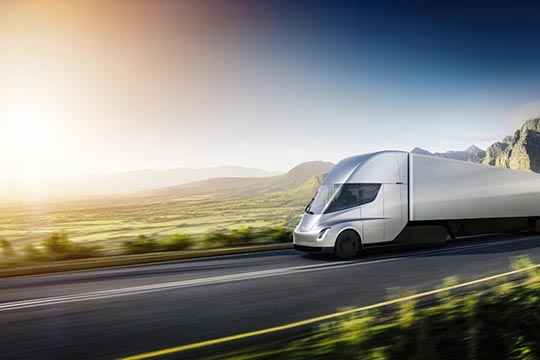
NREL Researchers Identify Near-Term Opportunity for Heavy-Duty Electric Trucks
NREL researchers studied a promising opportunity for near-term battery electrification: short-haul heavy-duty trucks using depot charging. Short-haul operations, primarily within a 200-mile range, account for approximately 50% of total heavy-duty energy use and emissions. The Nature Energy study found that approximately 80% of the 36 substations considered by Oncor Electric Delivery Company, an electric utility that partnered in the study, could supply 100 trucks charged at 100 kilowatts per vehicle without any upgrades. An additional 10% of existing substations could support the added load without any upgrade if fleets used managed “smart” charging.
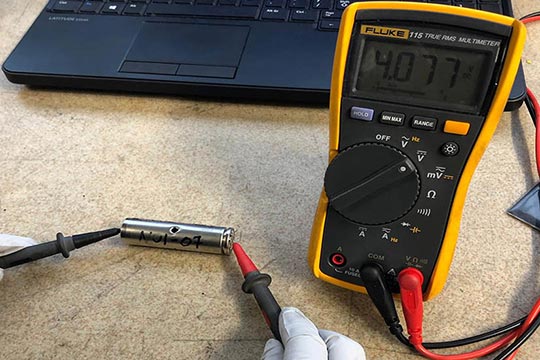
NREL, NASA, European Researchers Reveal Path to Safer Lithium-Ion Batteries
Scientists at NREL recently studied a solution to preventing a dangerous chain reaction in lithium-ion batteries known as thermal runaway. This research, detailed in the Cell Reports Physical Science journal, found that cells designed with a metal-coated polymer current collector demonstrated a reduced risk of thermal runaway during nail penetration. The latest research comes on the heels of NREL’s release of the Battery Failure Databank, a compilation of data generated by hundreds of abuse tests conducted on lithium-ion batteries.
Researchers Rev Up Innovative Machine-Learning Strategies To Reclaim Energy, Time, and Money Lost in Traffic Jams
Recent research led by the U.S. Department of Energy’s (DOE’s) Oak Ridge National Laboratory and supported by NREL reveals the potential to untangle traffic snarls via next-generation sensors and controls with high-performance computing, analytics, and machine learning. NREL created a series of simulations (or a “digital twin”) of Chattanooga, Tennessee, traffic conditions using real-time data collected using a variety of sensor devices. The simulations help identify which controls—in the form of traffic signal programming, alternative routing, speed harmonization, ramp metering, dynamic speed limits, and more—can deliver the greatest energy efficiency, while optimizing travel time, highway speed, and safety. Such solutions can be applied to larger metropolitan areas and regional corridors across the country.
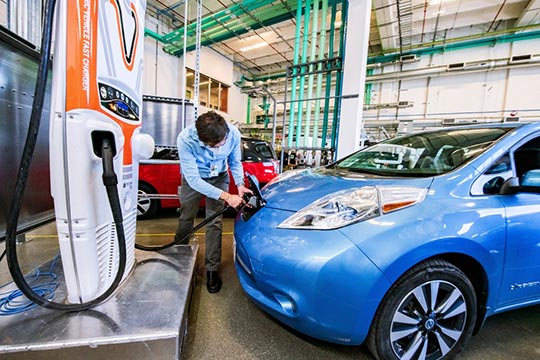
NREL Research Illuminates Optimistic Future for Vehicle Electrification
A recent Progress in Energy paper led by NREL assembled 19 international experts from 12 institutions to comprehensively review scientific studies of EVs. The study emphasizes the influx in EV popularity during the past 10 years as a result of maturating battery technologies, increased charging infrastructure, and regulations and standards emphasizing energy efficiency and lower emissions. The article also illustrates how synergies with other technologies could pave the way for new opportunities to reduce greenhouse gas emissions.
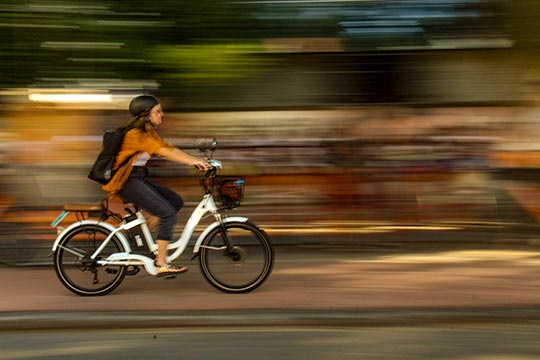
Pilot Program Sheds Light on E-Bike Use Patterns, Energy-Efficiency Benefits
In partnership with the Colorado Energy Office, NREL assessed the travel-behavior impacts of providing 13 low-income essential workers in the Denver area with e-bikes during the COVID-19 pandemic. During the 3-month study period, e-bikes were the dominant travel mode for 30% of trips, followed by shared rides at 29% and single-occupancy vehicle trips at just 20%. The insights garnered from this small-scale pilot are informing the design of the full-scale, 2-year pilot slated to begin this summer in locations across Colorado.

Environmental Concerns Propel Research Into Marine Biofuels
Marine biofuels produced from biomass can reduce life cycle greenhouse gas (GHG) emissions 67%–93% compared to heavy fuel oil commonly used in ships globally, according to a study by NREL scientists and others. The research helps establish the feasibility of ships using biofuels to help shipping companies comply with limits on sulfur oxides and GHG emissions issued by the International Maritime Organization. Fueling costs account for a significant part of running a shipping line, so the study weighs biofuel economics against the cost of heavy fuel oil.
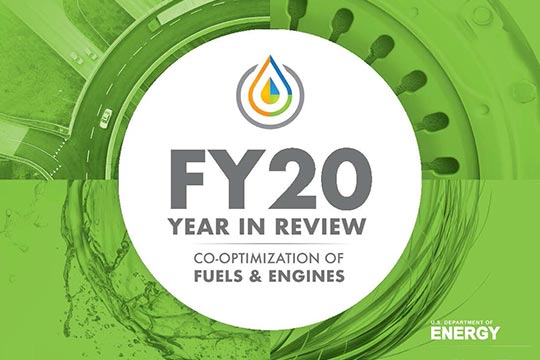
Co-Optima Report Spotlights Latest Engine and Fuel Innovations
A report from DOE’s Co-Optimization of Fuels and Engines (Co-Optima) initiative highlights opportunities to reduce tailpipe and GHG emissions through simultaneous improvements to vehicle fuels and engines. Featuring fuel–engine research by scientists at NREL and eight other national laboratories, the report largely focuses on bioblendstocks that reduce GHG emissions by more than 60% compared to petroleum fuel. Co-Optima has made significant progress in understanding blendstocks’ impacts on vehicle efficiency and emissions, especially combined with advanced combustion strategies for light-, medium-, and heavy-duty vehicles.
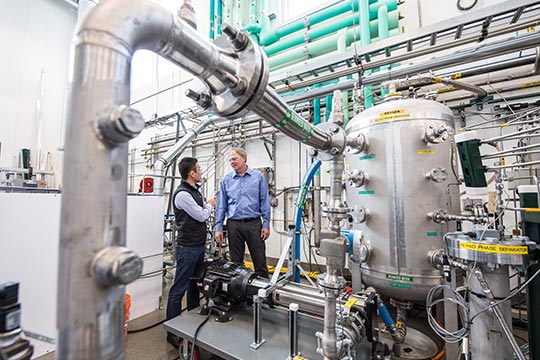
DOE Recognizes Multiple NREL Hydrogen Researchers at 2021 Annual Merit Review
DOE's Hydrogen Program recently honored 10 NREL researchers for their outstanding achievements. Rob Hovsapian, Kazunori Nagasawa, Sam Sprik, Michael Peters, and Cory Kreutzer were recognized for first-of-its-kind testing that established the ability of electrolyzers to dynamically respond to grid signals in regions with high penetrations of renewable energy. Chad Hunter, Joshua Eichman, Michael Penev, and Evan Reznicek were recognized for exceptional and rigorous analysis of the cost of long-duration energy storage technologies in high-renewable grids. And Yingying Chen was a first-place winner of the 2021 HFTO Postdoctoral Recognition Award for outstanding contributions in hydrogen and fuel cell technologies research, development, and demonstration.
Get To Know Our Team: Johanna Levene

A conversation with NREL's Johanna Levene, manager of the transportation applications and data analysis group.
What is your primary research focus at NREL?
My team provides data and information that support the deployment of sustainable mobility solutions across the United States. Last year alone, our top website that we manage on behalf of DOE—the Alternative Fuels Data Center (AFDC)—had 2.9 million visitors and 12 million page views. We have been providing information about alternative fuels since 1991. During my tenure, the AFDC's focus has expanded beyond the website to provide data in a variety of formats. For example, the Alternative Fueling Station Locator—the cornerstone of the AFDC—provides station data via a website, a mobile tool, data downloads, geospatial formats, and an application programming interface. The goal is to make our data available in any format for any user.
Personally, my most recent area of research focuses on the development of alternative fuel corridors along national highways. Utilizing my recently completed master's degree in geographic information science from the University of Denver, I've been helping states nominate corridors and investigating practical applications for end users to justify a transition to alternative fuels using such corridors.
In your field of research, what one mobility challenge do we need to prioritize in the next 5 years?
People are comfortable with automotive technology. They know how their cars work, they know how to maintain them, and they don't really see any tangible benefits of using new fuels. Sure, you can charge at home and curb local air pollution, but is that worth the risk of trying a new technology? I think soon we will hit the limit of people and fleets willing to try alternative fuels. We need to prioritize understanding why potential adopters are reluctant to make a change and help address concerns.
What sparked your interest in researching sustainable mobility?
I was an intern at NREL as an undergraduate student. I always loved the mission of the lab, but it wasn't until I had a couple of nonmission-driven work experiences that I came back to NREL. My background is in chemical and petroleum refining engineering, which gives me understanding of traditional liquid fuel systems and combustion. That knowledge is transferrable to alternative gaseous and liquid fuels.
I'm also fascinated by the regionality of transport. Solutions that work in San Francisco won't necessarily work in New Orleans or rural Kansas. If there was a sustainable transport solution that worked everywhere, we would have found it by now. The complexities of transportation problems fascinate me, as does finding solutions.
Why does sustainable mobility matter?
Mobility is a critical need for all humans, yet our current mobility systems and infrastructure have unacceptable health and environmental impacts, and their benefits are inequitably distributed. Sustainable mobility is critical for improving quality of life for people around the globe while addressing climate change challenges. EV charging enables us to cost-effectively take advantage of clean energy such as wind and solar—an imperative in mitigating climate change. Our analysis activities provide options and vital data for decision makers, revealing what programs and policies will have the biggest impact as we accelerate toward transportation decarbonization.
Must Reads
Transit Bus Electrification
Transit agencies looking to green their operations are increasingly turning toward electric buses. To ease the transition, NREL partnered with Microgrid Labs to enable automation of many agency-specific considerations that previously required time-intensive analysis. Then they put their automated transit fleet electrification strategy to the test via a pilot bus project in Boulder, Colorado.
Fuel Cell Electric Buses
Progress in fuel cell electric bus technology brings with it increased reliability and durability and reduced cost. A recent NREL report details the current state of the technology, with a focus on the achievements and challenges of introducing fuel cell buses in U.S. transit fleets.
Driving Cycles
Representative driving cycles allow scientists to characterize typical and extreme driving behaviors as they work toward full vehicle electrification. Read a Transportation Research Part D: Transport and Environment article to learn how NREL transportation researchers used a novel machine-learning approach to characterize heavy-duty truck vocations, putting us one step closer to the electrified designs of tomorrow.
Biofuels in Trucking
Even as medium- and heavy-duty trucks get closer to electrification, conventional diesel engines will continue to play a vital role in the trucking industry. Read a recent SAE Technical Paper to learn how NREL is using biofuels to reduce diesel’s carbon footprint—without sacrificing engine performance.
Did You Know?
The latest NREL charging trends report shows the number of public electric vehicle charging stations increased by 30% in 2020.
In the News
Scientific American
Is there an end in sight to the gridlock of the country’s biggest cities? Read Unsnarling Traffic Jams Is the Newest Way To Lower Emissions to learn more about NREL’s city-specific traffic solutions and where you might see them next.
Vox
Broad EV adoption goes hand in hand with accessible charging infrastructure. The Fastest Way To Get More People To Buy Electric Vehicles, draws on NREL expertise to tell the story.
Newsweek
Tapping NREL’s expertise on EV charging needs and the power grid, California Plans 'Massive Scale-up' of Grid for 90% Electric Vehicles by 2035 discusses the challenge of charging station and energy access to support an increase in EVs.
The New York Times
NREL analyzed INRIX data for A Little More Remote Work Could Change Rush Hour a Lot, covering the impacts of working from home on traffic during the pandemic, and what even a little more remote work could do for rush hour.
Share

